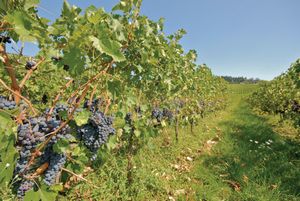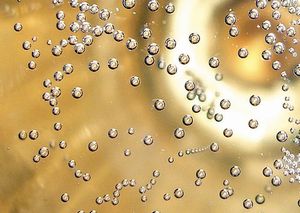From August to November, from Italy’s mountainous north to its sunniest south, the grape harvest is under way. Once the legal time to harvest has begun – and this date varies by region – winemakers and agronomists try to select the exact moment when their grapes are perfectly mature and ready to be picked. This means keeping one eye, literally, on the grapes themselves and the other on the sky, to be aware of weather conditions. In very simple terms, the longer the grapes stay on the vine, the higher the sugar content and, thereby, the richer the taste. However, if they get wet and stay wet, mould can develop quickly.
This year winter rains and snow gave the vines, especially in the south, an excellent reserve of water to draw upon in the summer. Regular precipitation and a general lack of frost during the spring also favoured an excellent development of the plants, right into June. Generally, the summer was hot, but not torrid, as it was in 2003.
Wine watchers www.trend-online.com even said it could be the best harvest in the last ten years. Giuseppe Martelli, managing director of Assenologi, which represents the majority of Italy’s winemakers, says that until August 15, it appeared a top vintage would be produced Italy-wide; but “bizarre” weather with unexpected rain and cool temperatures – even hail in the Chianti Rufina area – will have changed that on a vineyard-by-vineyard basis.
Roberto Bruchi, the director of an association whose members include hundreds of wineries in Tuscany , constantly monitors the state of the vines. He is optimistic about the 2005 harvest. According to him, it should be a top year for white wines and for red wines that are drunk young or middle-aged, as they will thus really be able to show off their aromatic characteristics and their freshness. He adds that the great red wines of Tuscany from 2005 will not disappoint the many sangiovese lovers who are eager to try them.
The first grapes to be picked were the ones that mature early (such as the Moscato, Dolcetto, and Trebbiano); those for the production of dry, sparkling wines; and those for certain sweet wines. By the first days of September nearly one-third of the national production had already been harvested. This included white wine grapes in the far north (to avoid cooler temperatures) and the far south (where they would become too alcoholic if left longer in the sun).
For example, I was in the Piedmont region, in Barolo, around September 15, and all the Dolcetto had already been picked. The Barbera will have been picked by the start of October and the Nebbiola grapes will be waiting their turn.
Between September and the early part of October, almost all the remaining grapes and grape varieties in Italy will be picked. The last grapes are the hardy, late-maturing grapes and those being left on the vine to produce certain sweet or even “ice” wines.
The harvest can be conducted in two ways: by hand or by machine. The advantage to the former method is that the crews, often the same people in the same vineyard year after year, select the clusters with care and discrimination– eliminating those with the slightest bit of mould, or those that birds or insects may have sampled. Careful not to crush the grapes, the workers then place the bunches into small plastic containers. One rule to making a good wine is that the clusters must arrive with the grapes intact at the moment of pressing. If grapes are bruised during the harvesting, the fermentation process can start too soon. For a good wine, the fermentation must take place later, in the cantina.
Today, more and more vineyards are using machines to gather their grapes. In some cases the machines are very sophisticated and can cost as much as a Formula 1 Ferrari. They facilitate a rapid harvest and, over time, are more economical than hand picking, which can take days and days, as well as dozens of workers. However, the machines lack the discerning touch of hand selection and gather, along with the grapes, wood and leaves that must then be filtered out.
Specialists ISMEA and the Union of Italian Wines are forecasting that the 2005 harvest (called the vendemmia or raccolta) will produce 5,180,000,000 litres of wine (usually expressed as 51.8 million hectolitres). Even if we’re talking about the old lire, a billion of anything is a lot, and we’re talking over 5 billion litres of wine!








